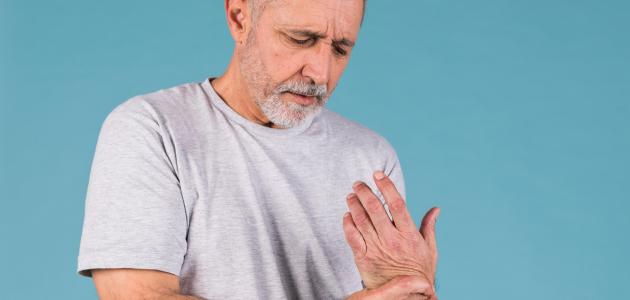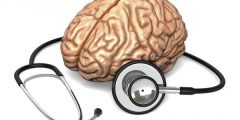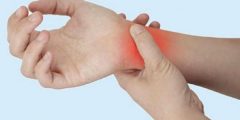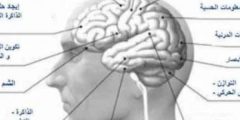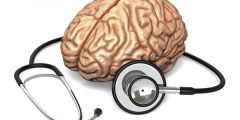Parkinson's disease
Parkinson's disease dates back to five thousand years BC. It was first known in the ancient Indian civilization, and was called (Kampavata). It was treated using the seeds of some plants containing what is known today as Levodopa. In 1817 AD, the British physician James Parkinson explained the truth about the disease, and from that day this disease was known by this name. Parkinson's disease is considered one of the most famous neurological problems and disorders, in addition to being the most common and widespread movement disorder. This disease usually affects people over sixty years of age, and this does not preclude the possibility of its appearance in other stages of life. The disease can simply be understood by stating that it is represented by a loss of control over the The muscles develop over time, causing the person to suffer from trembling of the limbs and shaking of the head while resting, in addition to the person facing problems with balance and slow movement. It should be noted that the ability of the disease to affect the body varies between those infected, as some are able to carry out their daily jobs and tasks. For others, the disease may prevent them from practicing their daily activities properly. It is worth noting that the disease may progress to a stage that causes the person to be unable to speak, walk, or complete the simple tasks assigned to him. In light of this, it is worth noting that the life expectancy of people with Parkinson's disease does not differ from that of people who do not have it. In other words, this disease does not cause death, and this does not mean that it increases the risk of a person suffering from some complications that may cause his death, such as pneumonia. (in English: Pneumonia) and exposure to blows and falls.
Read also:Exercises to strengthen the nerves
Parkinson's disease mechanism
One of the nervous structures in the brain is what is known as the basal ganglia. It consists of a large group of important nerves, and its basic function is to coordinate and facilitate muscle movements, in addition to coordinating and organizing changes in different body positions. As is known; In order for the muscle to move, as is the case when raising the arm, for example, the brain sends a nerve signal to the basal ganglia so that the basal ganglia, in turn, releases what are known as neurotransmitters. In fact, dopamine represents the main neurotransmitter in the basal ganglia. When the basal ganglia releases these neurotransmitters, the neurotransmitters stimulate neighboring nerve cells, so that the signal transmitted from the brain continues between the nerves and reaches the organ or part in question, which is the arm in our previous example. In fact, Parkinson's disease is characterized by damage to the nerve cells located in the basal ganglia, which reduces their ability to produce and release dopamine. This in turn causes imbalances in the ability of the nerves in question to communicate with each other, causing the affected person to suffer from problems at the level of muscle control and movement. The patient suffers from tremor and general movement disorders.
Although the true cause of Parkinson's disease is not known, a theory has shown that there is an acceptable explanation for the occurrence of this disease, and this theory shows that the matter is based on an abnormal accumulation of a protein responsible for achieving correct communication between nerve cells, and this protein is known as synuclein (in English). Synuclein. This abnormal accumulation is known as Lewy bodies. It should be noted that these bodies accumulate in different parts of the brain, negatively affecting its function and ability to carry out its tasks. In addition to the above, it has been found that people who suffer from People with Parkinson's disease have relatives who also suffer from it, which gives the impression that there may be an influence of genes in the emergence of this disease.
Read also:What is the treatment for nerve strain?
Parkinson's disease treatment
Until this moment, there is no cure for Parkinson's disease, but it is believed that there is a group of therapeutic options that have the ability to control the symptoms in addition to improving the sufferer's quality of life, including the following:
- Pharmacological options: It is used to control the main symptoms of Parkinson's disease, which are tremor and suffering from movement disorders. It should be noted that the available medications are not effective in treating all people with Parkinson's disease, and the drug options that can be used in treating Parkinson's disease can be divided as follows:
- Levodopa.
- Dopamine agonists.
- Monoamine oxidase-B inhibitors, examples of which include rasagiline and selegiline.
- Catechol-O-methyltransferase inhibitors.
- Apomorphine.
- Duodopa.
- Surgical options: Surgical options are rarely used to control Parkinson's disease, and the approved type of surgery in such cases is what is known as deep brain stimulation.
- Other treatments: It aims to support the patient in order to facilitate his life and help him cope with the symptoms of the disease, including physical therapy, which is based on exercise and movement to relieve joint pain and muscle stiffness, and occupational therapy, which is based on identifying difficulties. And the problems facing the patient and trying to find solutions to them and increase his ability to rely on himself. Other treatments also used are what is known as speech and language therapy. There are also some nutritional advice that is given to people with Parkinson’s disease, such as the need to eat a lot of fiber and drink water to avoid constipation. And make some changes to the food level to avoid unintended weight loss.
